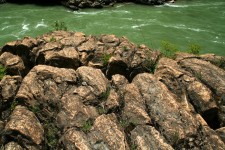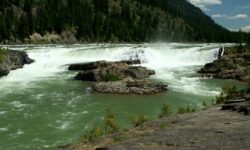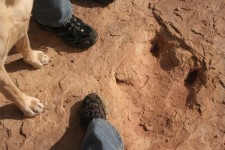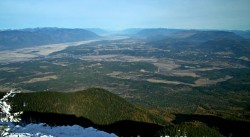Have you ever came across a rock that looked like ripples in shallow water? They are amazing!
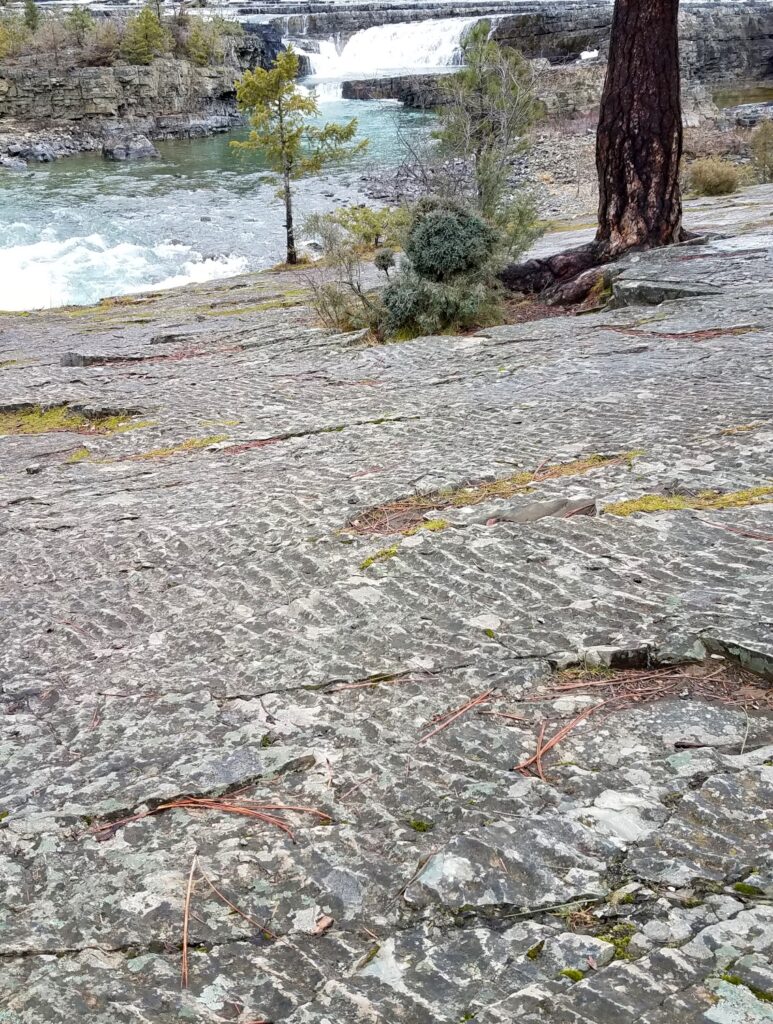
You’re looking at a snapshot of Earth’s history from millions of years ago. Ripple marks in rocks are clues to what the environment was like when those ripple marks were buried. At Kootenai Falls in Montana (above photo) the ripple marks were created around 1.5 billion years ago.
Ripples found in rocks millions and billions years old were created by the same processes that create ripples on shorelines today.
“The present is the key to the past.”
~Charles Lyell, Principles of Geology
Where are ripple marks found?
Today and millennia ago, ripple marks are found in areas with fine-grained sediment shaped by agitation of water or wind.
Areas like:
- Shorelines
- Tidal zones
- Rivers
- Dunes
What causes ripple marks?
Ripple marks are caused by a current of water or wind. The current needs a Goldilock speed so it doesn’t erode the ripples away completely (think flash flood) but is strong enough to carry the fine-grained sediment (sand, silt, clay) conducive to ripple formation.
Ripples form as water travels across sediment and creates oscillations where sediment grains circle around. The oscillating flow carves the sediment into a series of troughs and grooves according to Taylor Perron, associate professor of geology and associate head of MIT’s Department of Earth, Atmospheric and Planetary Sciences.
Once ripples are formed, they are not stationary- they migrate with the current. As the current picks up sediment from the stoss side (upstream), it carries it and then deposits in on the lee side (downstream).
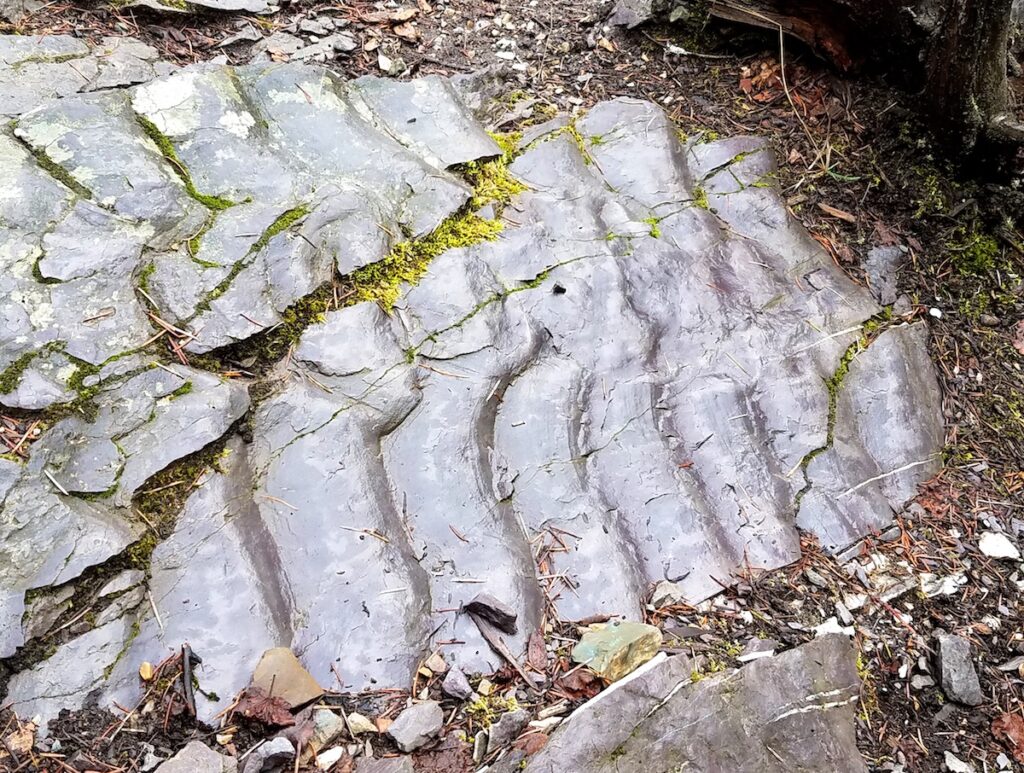
What ripples tell about the environment?
Ripples indicate what direction the current was flowing at the time of deposition. All ripples form perpendicular to the water or wind direction. If there was a wind from the south, the ripples marks would trend east to west.
There are two types of ripples that form- each in a different environment.
Asymmetrical ripples form with a one-way current (rivers, beaches as the water drains off, shallow seas with tidal currents and even deep seas). The ripples have a pointed crest with a gently-inclined stoss side (upstream) and a steeply-inclined lee side (downstream). The difference in inclines tells the direction of flow.
Symmetrical ripples form by a two-way current, like waves on a beach or a shallow sea. The ripples also have a pointed crest but both sides of the ripple have the same inclination. As the waves go in and out on the shoreline, they erode and deposit in both directions.
Some ripple rocks have short ripples spaced close together while others have slightly taller ripples spaced farther apart and everything in between. That spacing between ripple crests is proportional to the water depth and wave size that created those ripples according to Perron.
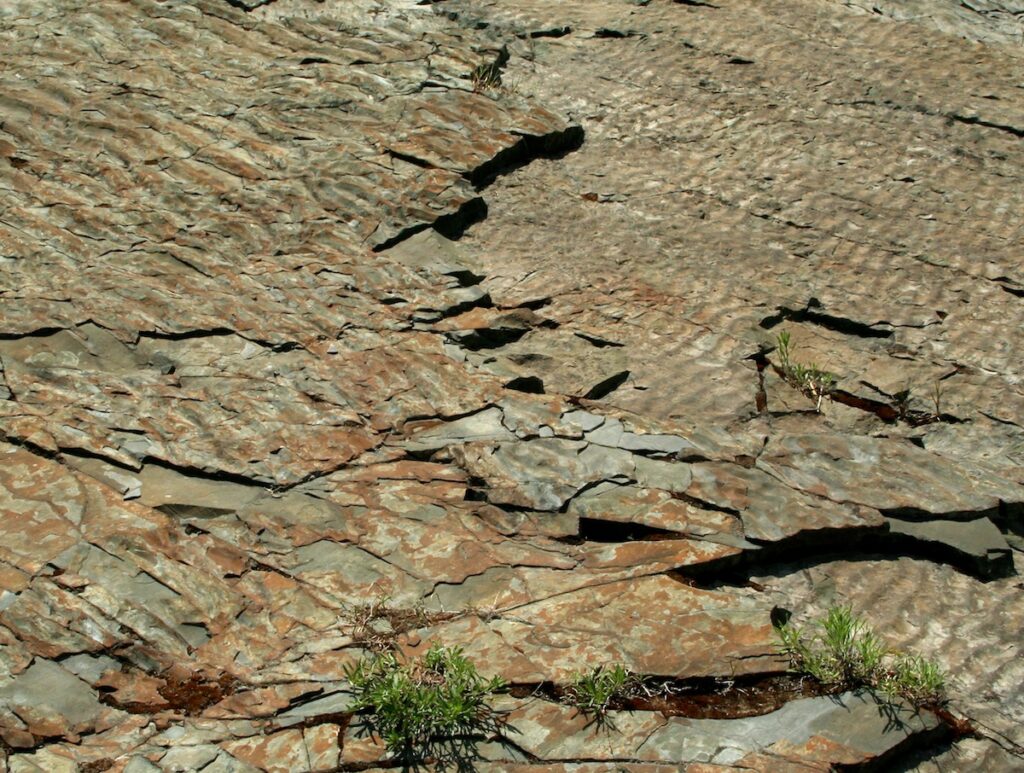
Maybe you noticed that the ripple marks are roughly parallel- this indicates steady wave conditions.
Maybe you noticed the ripples include zigzags, hourglasses or tuning fork shapes. These “defects” indicate changing conditions over a few hours or days such as changing wind speed, strong storms or major changes in tidal flow.
Perron and a team of researchers simulated wave formation and discovered how these defects were made. If steady conditions changed to shorter waves, the ripple spacing became narrower and hourglass patterns emerged. If even more shorter and faster waves ensued, then “secondary crest” patterns emerged where a shadow ripple formed. If steady conditions changed to longer waves, the ripples showed a zigzag pattern as they shifted to wider spacing.
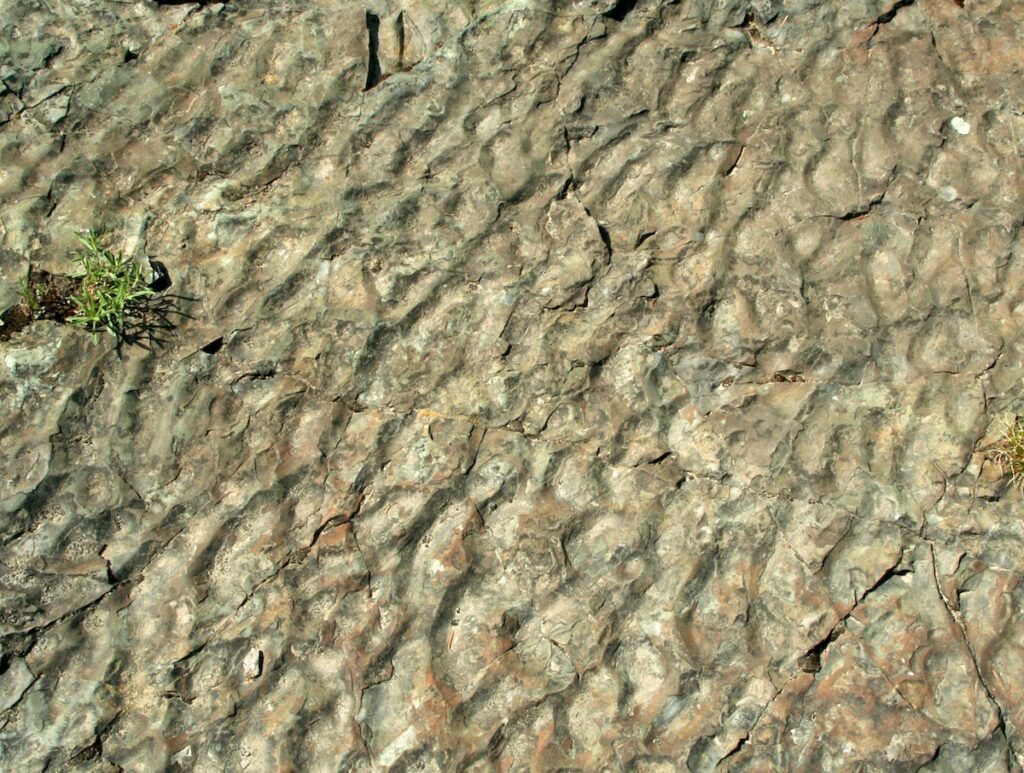
How are ripples preserved in rock?
Throughout time there have been too many ripple beds to count and only some of them are preserved in the rock record. A significant event had to change the environment in order for them to be preserved instead of eroded away.
A sudden water level drop (or land uplift) would leave ripples above the water level and exposed to air so they would dry out and harden. Then the ripples would have needed to be buried by sediment, such as blowing sand, in order to be protected from erosion.
Another scenario is that the ripple bed could be blanketed by finer sediments (mud or silt) during a storm which buries them.
Then over time, the ripples are buried deeper and deeper and the heat and pressure from within the Earth turns them into sedimentary rock. Then over more time, the overlying rock is eroded away and exposes the ripples for us to see.
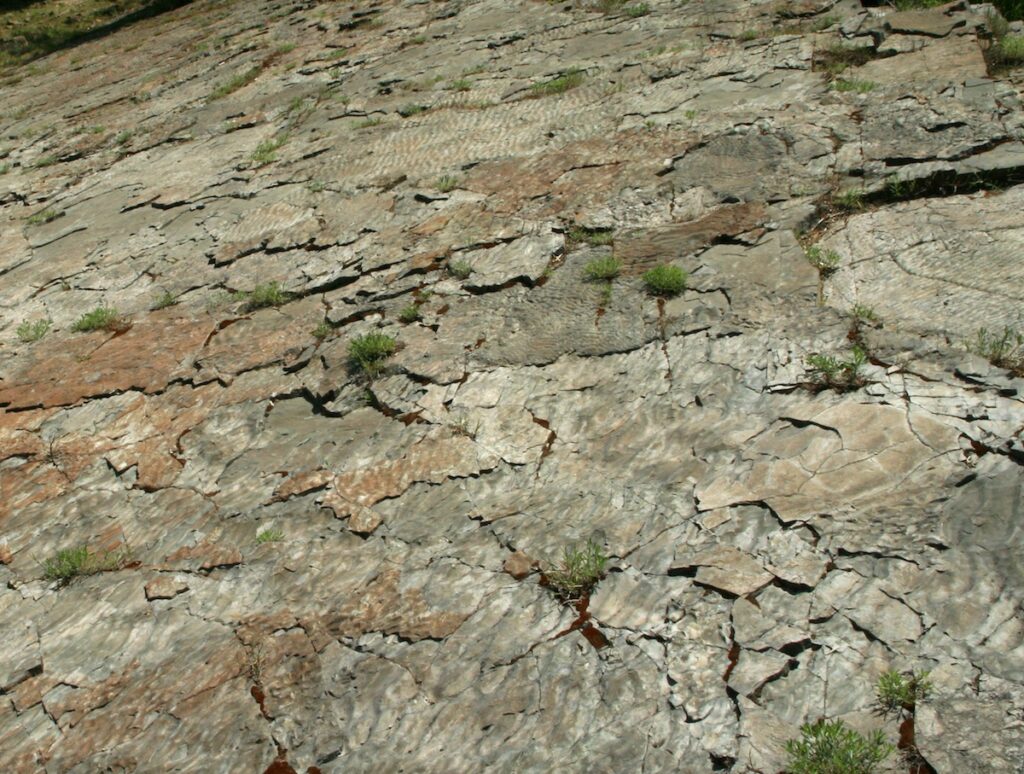
Resources:

